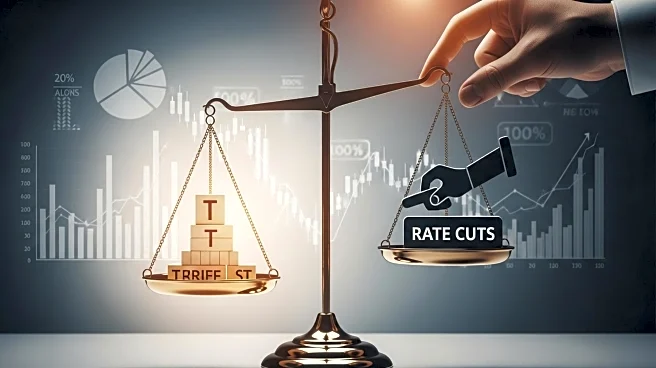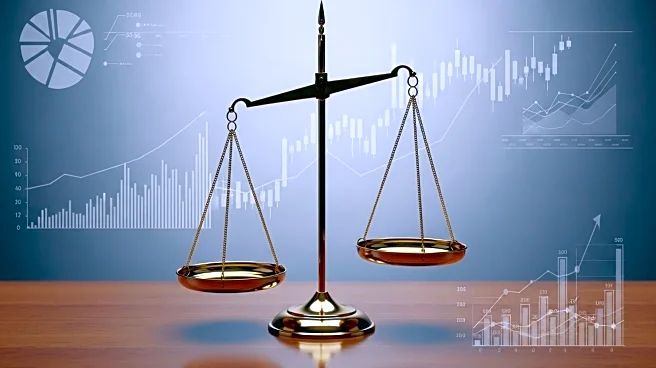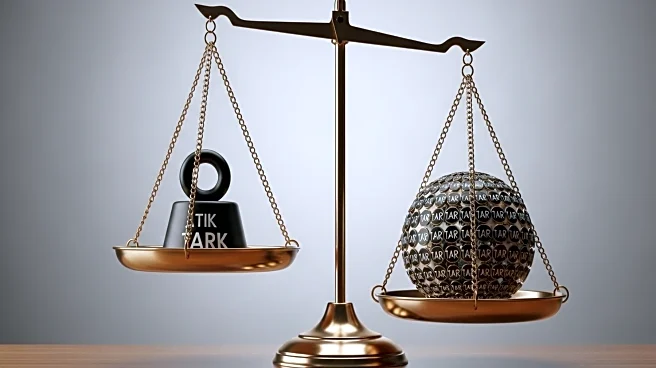What's Happening?
The Federal Reserve is planning two 25-basis-point rate cuts by the end of 2025 to counter inflationary pressures resulting from tariffs, which have increased headline PCE inflation to 2.7%. However, there is internal division among Fed policymakers, with seven out of 18 opposing the cuts due to concerns about prolonged inflation. This uncertainty complicates asset allocation, as rate cuts could lower borrowing costs for cyclical sectors like industrials but exacerbate inflation if tariffs remain. Trump's tariffs face legal challenges, with the Supreme Court set to decide their fate by October 2025, creating sector-specific market distortions.
Why It's Important?
The Federal Reserve's decision to cut rates is crucial for managing inflation and supporting economic growth. Lower borrowing costs could benefit industries like real estate and consumer discretionary, potentially stimulating investment and consumption. However, the ongoing legal challenges to Trump's tariffs add complexity, as they create uncertainty for businesses and investors. The outcome of these legal proceedings could significantly impact sectors like steel and aluminum, which benefit from protectionist policies, while downstream industries face margin compression. The Fed's policy decisions will influence economic stability and investor confidence.
What's Next?
The Supreme Court's decision on the legality of Trump's tariffs will be pivotal, potentially reshaping trade policies and economic conditions. If tariffs are upheld, sectors benefiting from protectionist measures may continue to thrive, while others may face increased costs. The Federal Reserve will need to navigate these challenges, balancing rate cuts with inflation control. Investors and businesses will closely watch these developments, adjusting strategies based on the evolving economic landscape. The Fed's actions and the legal outcomes will have lasting effects on market dynamics and economic policy.











